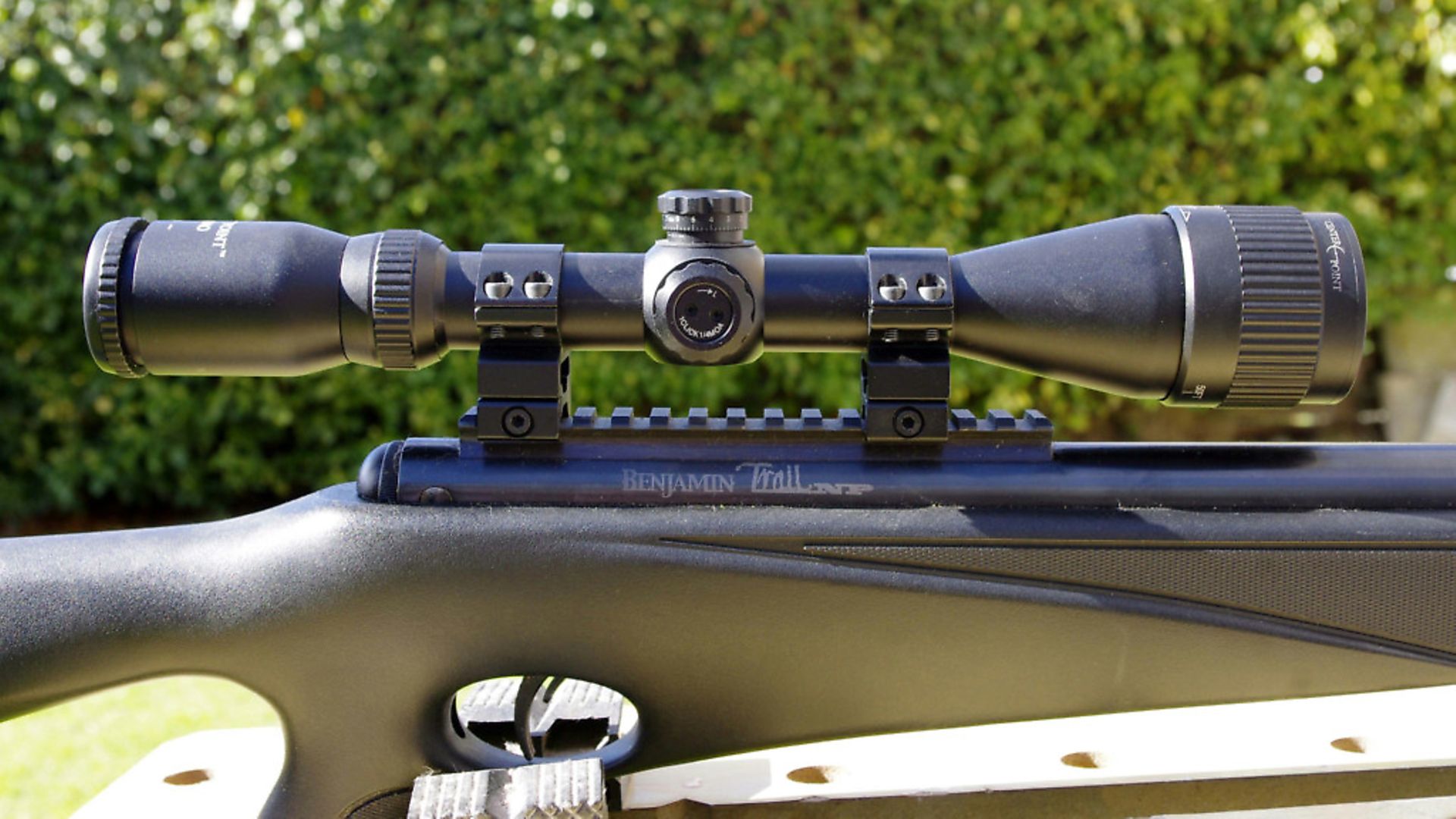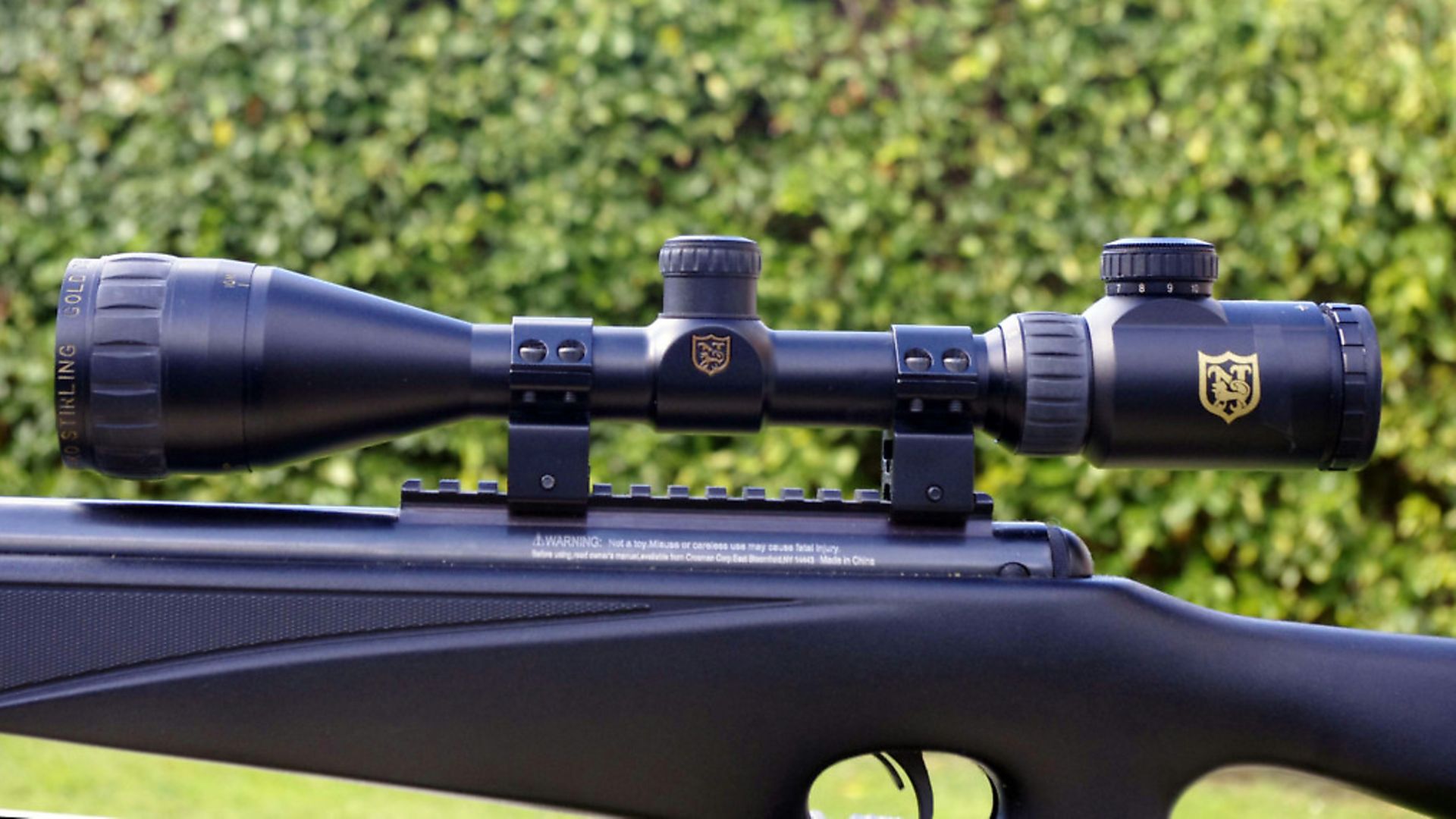“Whatever you choose for your next scope, make sure it meets your primary shooting needs and take particular care over choosing the right recticle.”
 credit: Archant
credit: Archant
Every issue of Air Gunner (and the sister mag, Airgun World) has me looking at new scopes, and like all equipment in our sport, they carry a built-in temptation to upgrade. There are so many features to consider; tube size, objective size, lens coating, focusing, magnification, and most importantly, the reticle. Poring over these details is always enjoyable – contemplating buying new kit always is.
This time, instead of just drooling over one set of specifications and then another, I asked myself, ‘Why do I want a new scope? What is it that I’m seeking?’ The single answer to these questions was, ‘An image so sharp and clear that I concentrate only on the correct placement of the reticle for a successful shot’.
I considered my existing scopes and thought about what they offered, and how they met my needs – until I bought the next one.
Upgrades
My first scope, to top off a Cometa Fenix 400 .22 springer, was a 2.5-10 x 44 BSA, sporting a 30-30 (Duplex) reticle. This was my first ‘proper’ airgun outfit and I thought it was simply wonderful – I couldn’t envisage any need for change. However, the fixed focus soon led me to realise that the best image would be achieved by adjusting the front objective for sharp focus between about 18 yards and 35 yards. Zeroed at 30 yards, it was clear and effective at hunting ranges. Perfect...or so I thought.
Of course, hold over and windage corrections were achieved by guestimation, and that turned out to be the seed of my first upgrade. With a sub-12 ft.lbs .22, the curved trajectory meant quite a lot of variation at different distances, both in holdover and windage, and I wanted something a bit more precise than this.
Enter the Nikko Sterling (Game King 4-10 x 44). This scope provided parallax adjustment at the front and a glass-etched, red-illuminated, mil-dot reticle. The excitement of anticipated improvements in accuracy and consistency was almost unbearable.
A quick download of Hawke Chairgun software and I was able to make a range card that gave much more precise aiming information. Shooting at dawn and dusk was easier, too, thanks to the graduated red illumination of only the mil-dot cross hair of the reticle. Holdover accuracy over varied distances soon picked up, too, although accurate assessment of windage still seemed like black magic!
 credit: Archant
credit: Archant
Precision
The next realisation was that, to make the most of the scope and software combination, I needed clear and accurate range information, so the next upgrade – not a new scope – was a Hawke 600 Pro laser rangefinder. Wow! How had I coped all this time without one? The difference it made, and continues to make, is fundamental to getting the best out of scopes and myself. Holdover became easy; precision over hunting distances, and even further at the shooting range, seemed uncanny. Pellets arrived exactly as expected – within the grouping accuracy of my springer rifle.
Everything sorted, right? Well, er … yes – until fate lent a hand and the Cometa trigger broke just after I’d bought a Benjamin Trail gas-ram, break-barrel!
This came with a CenterPoint 3-9 x 40 AO scope and one-piece mount. I replaced this with the aforementioned Nikko Sterling scope and consigned the Cometa to the ‘sort out at a later date’ area of my loft.
However, and this is the nub of my scope problem, even though it’s an inexpensive kit scope, the CenterPoint scope reticle has characteristics that I would like in my ideal scope, and I still flirt with the idea of using it as my main optic. Why? Its reticle is what’s known as the ‘4A mil-Plex’, which has German-style thick posts on all but the top vertical line, making rapid target acquisition easier and quicker, especially for close-range, unexpected targets. I also like fine line mil markers, instead of dots, but would love it to have half-mil lines, too – something delivered by the Discovery VT-2 10 x 44 SF, another desirable scope, reviewed in September’s edition of Airgunner, by Mark Camoccio.
Scope fussy
My first PCP, a Walther RM8 Varmint, in .22, was bought with a Nikko Sterling Mountmaster 4-12 x 50, AO IR half mil-dot. This is my main scope; it ticks more of my ‘scope boxes’ than any of the others. My only slight niggle with this scope is that the whole reticle is illuminated red/green when using the IR feature. Fortunately, five levels of brightness address this, but its low-light performance and half mil-dot reticle more than make up for it and have helped to raise my personal accuracy bar even further, especially out in the field. That’s what a hunting scope’s for, right?
So, why whinge, even a little, about a really good scope? For the same reason that I’m always looking at new ones - it’s not QUITE perfect, because its low magnification isn’t ideal at my local shooting range and it isn’t as good as the 4A mil-plex reticle for close range, unexpected targets.
The current answer to being scope fussy, like me, might be to explore the available quick-release scope mounts. If they really do hold zero, when detached and then re-attached, my perfect solution could be in the right mounts that allow me to swap scopes quickly and use the best one for the job, rather than seeking the Holy Grail of scopes, that might not even exist.
Scope for all seasons
However, I do sometimes wonder if the active LCD reticle of a laser rangefinder, or the varied reticles on holographic sights could be brought together so that a shooter could dial in the preferred reticle for the job. A ‘scope for all seasons’, if you like. OK, there might be some light loss, but a 50mm front objective would, maybe, cover that.
One thing is for sure, though; whatever you choose for your next scope, make sure that it meets your primary shooting needs and take particular care over choosing the right reticle. When you take aim, that – more than anything else – is what absorbs your concentration when selecting the perfect point of aim.
After all this, what would my perfect scope for all seasons look like? At the shooting range, something with a high magnification like 6-24 x 50, but in the field I like a wide view at lowest magnification so 4-12 x 50(or 44) would be fine; most, but by no means all, of my hunting shots are taken at either 6 or 12 times magnification. The scope would have an adjustable objective, side preferred, but front OK. The reticle would have the CenterPoint’s 4A mil-plex reticle with the three thick posts, but with half mil-dot markers and an illuminated red/green centre section. Perfect! Just don’t expect the same answer next time!
__________________________________________________
The anatomy of a scope
Are you underestimating the importance of your scope mount?
How to set up scopes and scope mounts to get the best accuracy
Fitting a scope for improvement